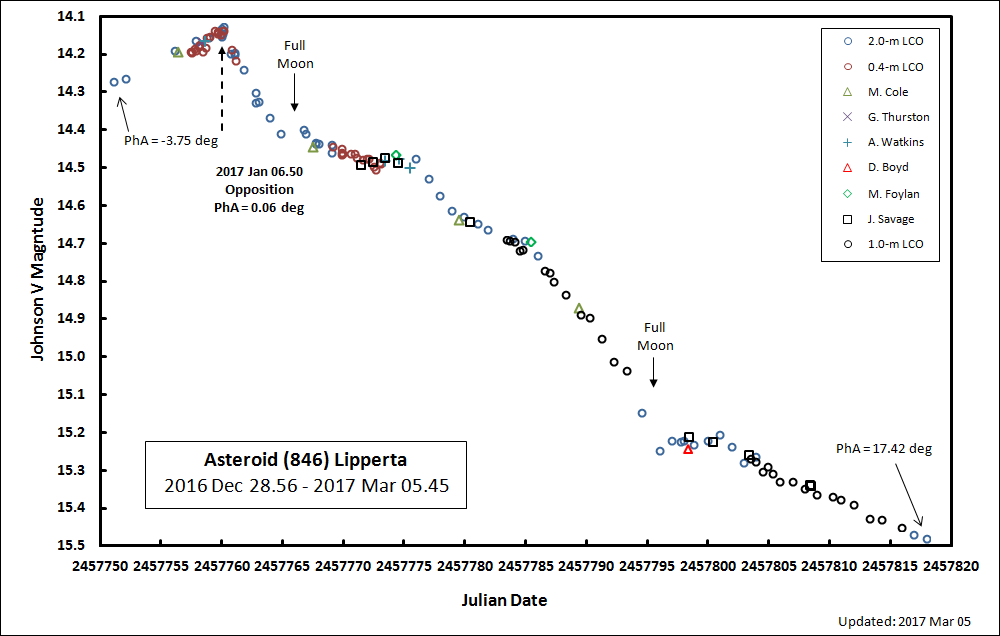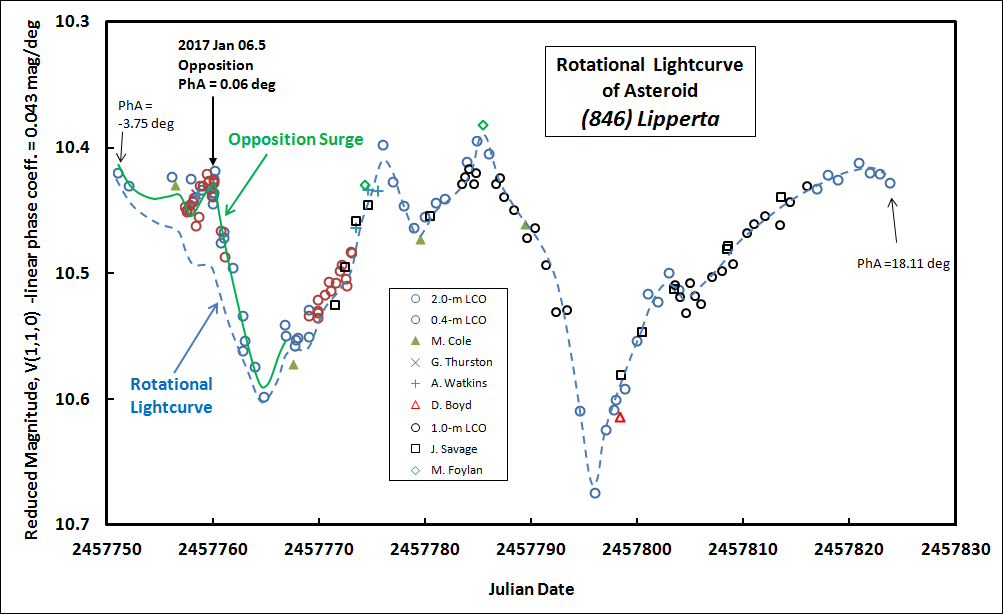
Dear ARPS Member,
You may be interested to know that our observing campaign to study the
unusual asteroid (846) Lipperta has been going now for 67 days. See results
below.
The vast majority of asteroids rotate once every 4-40 hours but it seems
that Lipperta stands apart in that it looks to be one of, if not THE slowest
rotator amongst ALL the small solar system bodies currently known.
Bob Buchheim and Gordon Gartrelle first discovered its exceptional slow
rotation in 2010-2011 (Minor Planet Bulletin 38, 151-153 (2011)). Their
incomplete lightcurve strongly suggested Lipperta takes a full 68 days to
spin once.
As you can see from the attached, we are on the point of confirming Bob and
Gordon's discovery, and as we continue to observe this slow-coach of an
object, we should see the lightcurve start to repeat itself. Eventually, we
should be able to determine its spin rate to an accuracy of an hour or two.
However, we have to be a little careful as theoretically we might expect the
slowest spinning objects to have a good chance of spinning around two axes
at the same time - i.e. rather like a precessing spinning top - usually we
call this behaviour, tumbling. Whether Lipperta tumbles we shall have to
check by following it for another complete rotation. We shall not need to
pursue it so intensively as has been achieved so far, which should be
something of a relief !
Thanks to all the observers who have participated in this on-going campaign.
Keep up the good work.
This exercise is also teaching us as to how best to maximise the accuracy of
our observations. The keys to our progress in this regard are recent updates
to the software package, Astrometrica courtesy of Herbert Raab, as well as
the creation of the APASS (The AAVSO Photometric All-Sky Survey) star
catalogue thanks to the foresight of the then director of the AAVSO, Dr
Arne Henden. In 2014, APASS was incorporated in the UCAC-4 star catalogue,
making this a game-changer when it comes to doing V photometry of celestial
objects.
N.B. Some future targets for observers will be a number of 'remote planets',
namely some carefully selected extra-solar planets - or as more commonly
referred to 'exoplanets'. When stars host one or more exoplanets, if their
orbital planes are near the line of sight of the Earth, their presence can
be evidenced by a slight (often ~0.01 mag or less) drop in light from the
stars as the planets transit in front of the stellar disks. Watch this space
for more news on this!
Clear skies,
Richard Miles
2017 March 05

